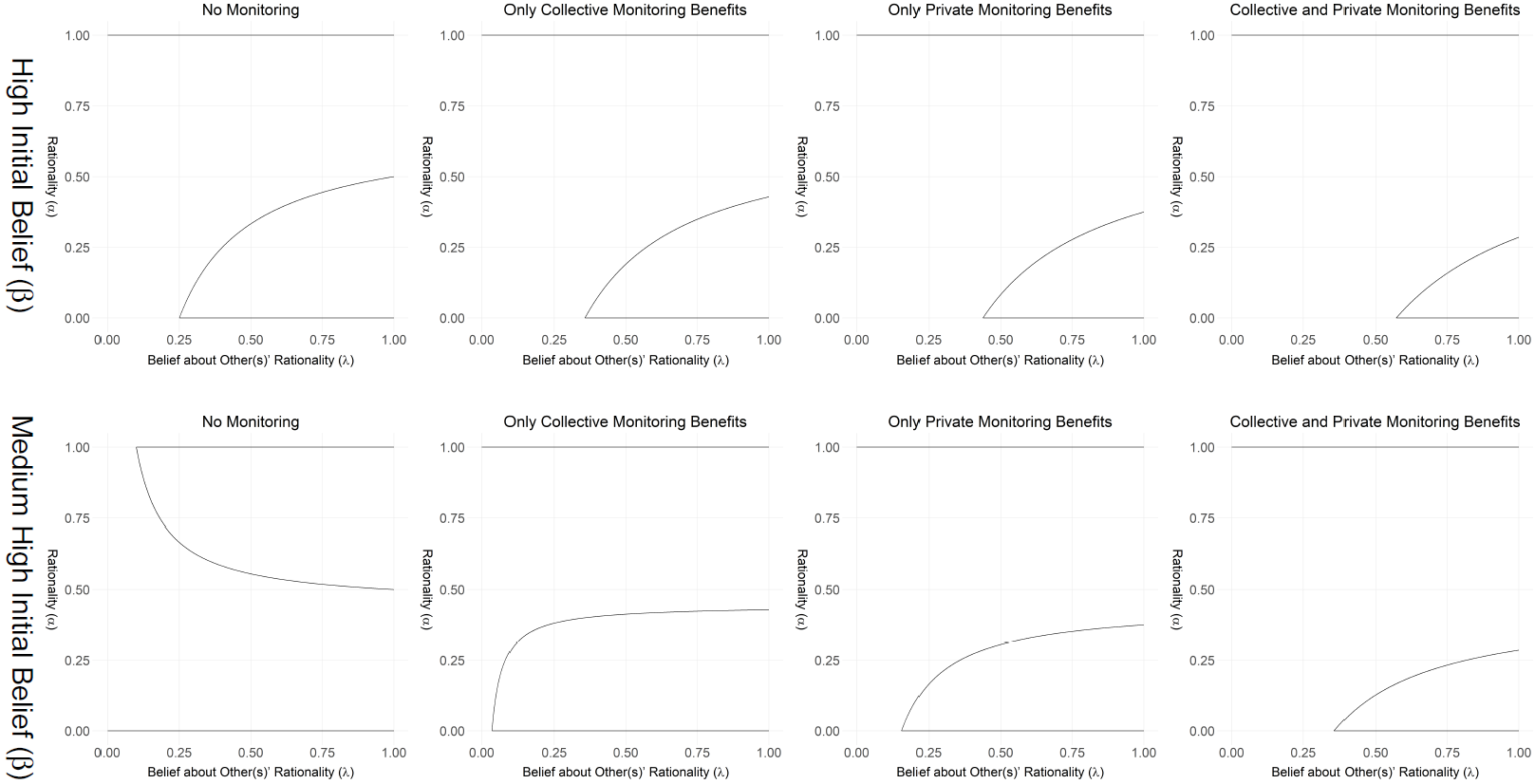Monitoring Corruption and Overcoming the Collective Action Problem: Experimental Evidence from Pakistan
Pre-Analysis Plan registered with EGAP (with Torben Behmer, Mobin Piracha & Adi Tantravahi).
Does monitoring corruption work? If so, which types of monitoring schemes are most effective at reducing corruption? To answer these questions, we model corruption as a collective action problem that may be mitigated with: (i) collective benefits that are subject to top-down principal-agent challenges; and (ii) private benefits that are subject to horizontal accountability challenges. Employing stability sets to adjudicate between the likelihood of different equilibria, we find that even incremental anti-corruption interventions mitigate corruption. To test the utility of our model, we undertake a related conjoint experiment on relatively poor Pakistani factory workers, a demographic that is frequently solicited for bribes. Consistent with our model, we expect to find that monitoring schemes with either collective or private benefits, including those provided by NGOs, increase citizens' willingness to refuse to pay bribes. However, we expect to find that the most effective monitoring schemes in fomenting citizen-level collective action against corruption combine both collective and private benefits. Such results would suggest that monitoring corruption is not only a good use of scarce resources but that success is mainly a matter of policy design. [Updated Pre-Analysis Plan (PAP)] [EGAP Registry]
NOTE: Due to COVID-19, we paused data collection for this project in March 2020. We will resume data collection once it is safe to do so.

